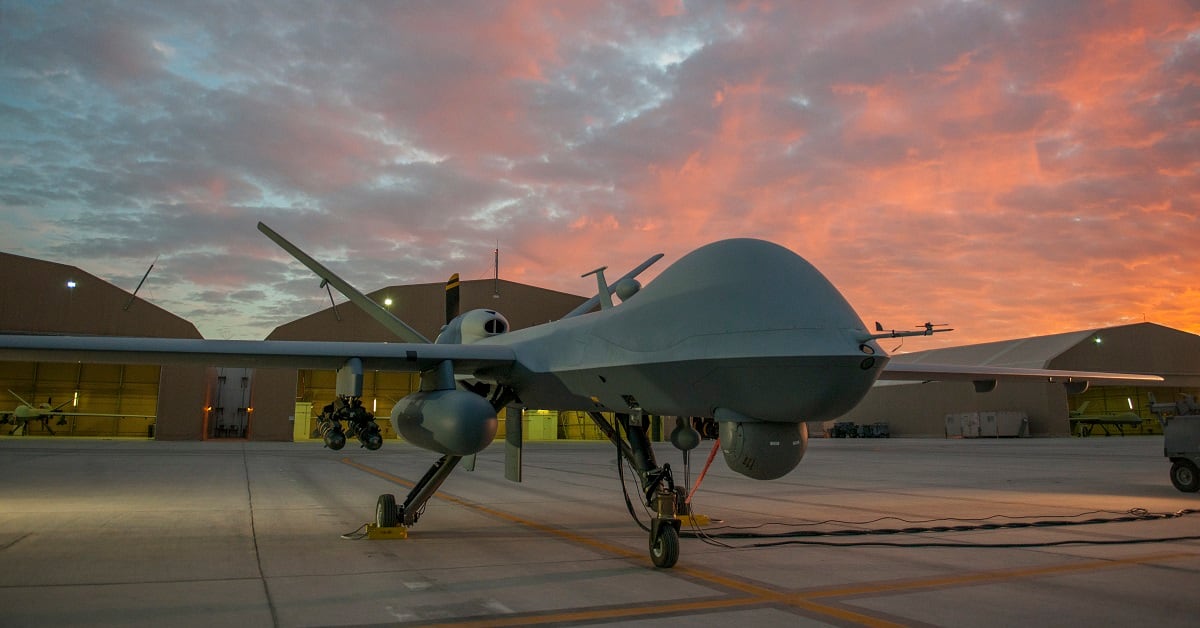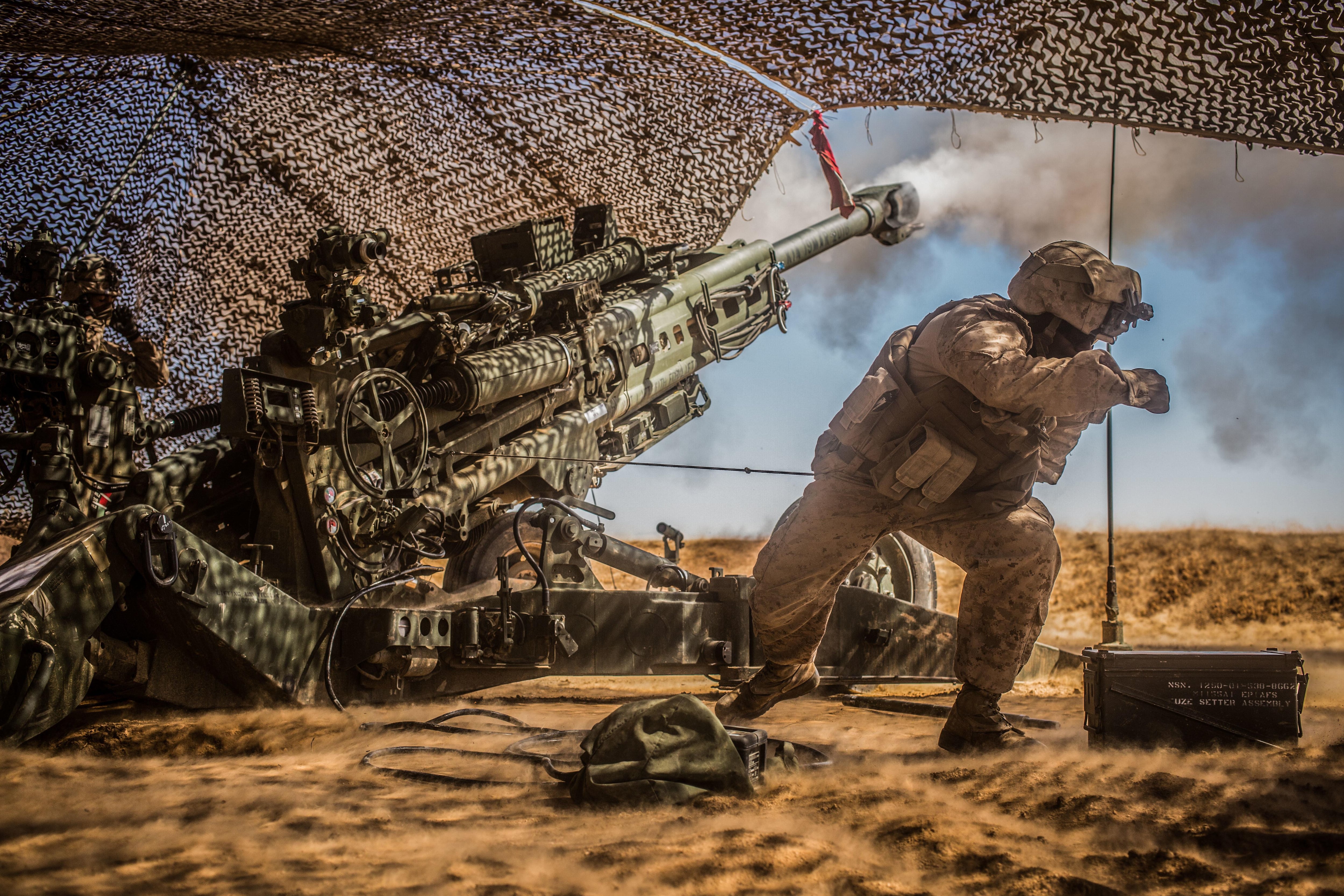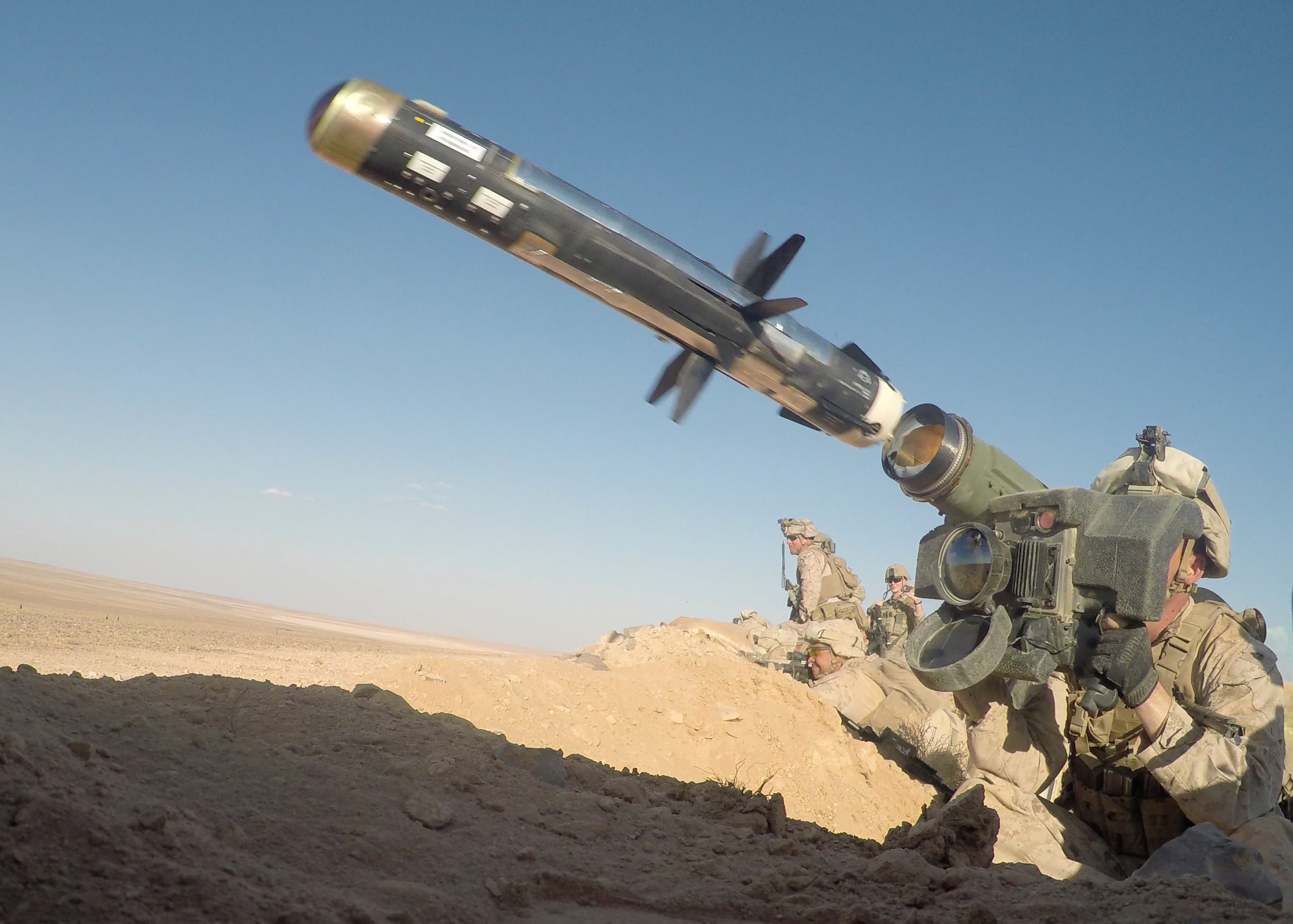While much of the conflicts across the Middle East tend toward low tech and low intensity, the fight in Syria is providing Marine commanders with a wealth of knowledge and experience for a future fight with near peer rivals like Russia and China.
The Syrian battlefield is littered with a host of tech and weapons that range from Cold War relics to drones, sophisticated anti-tank systems, Russian jets and anti-aircraft systems ― even aggressive electronic warfare tech.
The environment is providing invaluable experience to Marines and U.S. military commanders who deploy to the region, but it’s also pushing Marines to retrain skills more salient during the Cold War, like camouflage and reducing electronic and observable signatures.
Marine Col. George Schreffler III, the former commander of Special Purpose Marine Air-Ground Task Force – Crisis Response – Central Command, told reporters during a media roundtable Wednesday that the Corps was learning valuable lessons about a number of high-end threats in the region. Schreffler and the Marines under his command deployed to the Central Command area of operations from April until December 2018.
“There currently are threats out there," Schreffler said. “And with our aircrews in particular operating in Central Command is a significant opportunity to assess and deal with these threats ... they’re gaining significant operational experience that’s going to make them more relevant.”
RELATED

Schreffler did not specify the particular threats, citing operational security, but in April 2018 the commander of U.S. Special Operations Command, Army Gen. Tony Thomas, said that U.S. military forces in Syria were subject to aggressive electronic attacks.
“Right now in Syria, we’re in the most aggressive EW [electronic warfare] environment on the planet, from our adversaries,” Thomas said at the U.S. Geospatial Intelligence Foundation’s GEOINT 2018 Symposium. “They’re testing us every day, knocking our communications down, disabling our AC-130s, et cetera.”
“You’re getting exposure to threats from adversaries to potential adversaries around the region that you can’t replicate back in the United States,” Schreffler explained. “And that’s making us more ready.”
Those lessons learned are making their way up the military chain of command across the military and to the Pentagon.

“What we are doing is a model for every other Marine unit,” Schreffler said.
But, even before stepping foot in the Middle East the Marines were prepping for the high-end fight during their predeployment work-ups in the U.S.
The higher-end fight is a contingency the Marines have to be prepared for regardless of where they are headed. Schreffler said that an incident somewhere around the globe could have diverted their unit from Central Command, or an incident in CENTCOM itself could have required Marines with high-tech skills to take on a near-peer rival.
Nevertheless, the Syrian warfront is host to sophisticated tech that’s testing and prepping the Corps and forcing the Marines to take heed of lessons learned during the Cold War.
“A lot of what’s old is new again," Schreffler said.
The region is littered with a number of adversarial drones that range from commercial off the shelf quadcopters to larger military attack and surveillance craft.
One such drone is the Iranian Shahid-129.
The U.S. military already has had an encounter with that drone, having shot down two of them in 2017 near the small U.S. military garrison at Tanf located near the Iraq-Syria border. In one of those instances, the enemy drone dropped a dud munition near coalition and partner forces.
With enemy surveillance and sophisticated tech on the battlefield, the Corps once again has to be mindful of its observable and electromagnetic signatures.
“We have to continue to train to minimize our signatures, both from an electromagnetic perspective, and from the physical, visual and audible observation perspective,” Schreffler explained.
“Camouflage and cover and concealment matter, and when any adversary is looking at you with their own small unmanned aerial systems, or their aircraft ... your Marines have to be good at skills Marines always have to be good at,” he said.

Deployments to the CENTCOM region are also affording Marines to experiment with and contribute to a future Marine fighting concept called expeditionary advanced base operations, or EABO, which is still awaiting the approval of the Commandant of the Marine Corps Gen. Robert Neller.
The EABO fighting concept may see Marines fighting from small island bases or barges strewn across the expanse of the Pacific Ocean. Fighting in this environment will require the Corps to operate in small distributed groups, spread thinly across vast distances. Learning how to survive and fight in the this environment will pivotal should the Corps find itself at war with China.
In the CENTCOM region, Marines already are operating similar to this concept. Schreffler’s Marines were spread across three war zones in Iraq, Syria and Afghanistan.
The deployment’s operations officer Lt. Col. Michael McFerron told reporters that an operation near the Tanf garrison in September 2018 was a narrow view example of the EABO concept.
Following provocations by Russian forces to breach a 55-km deconfliction bubble around the Tanf garrison, which houses a small group of American forces training anti-ISIS fighters, a company of Marines were rushed to re-enforce the area, where they conducted live fire exercises over several days and then withdrew.
The operation required intermediate staging areas, a rapid timeline to insert forces and logistical plans to move troops and recover that force, McFerron said.
Syria is not the only battlefield where the Corps is prepping its force for modern war.
In Afghanistan, Marines in Helmand province are learning how to manage and control larger classes of drones like the MQ-9 Reaper, as the force awaits its large-scale futuristic MUX drone.
Shawn Snow is the senior reporter for Marine Corps Times and a Marine Corps veteran.





